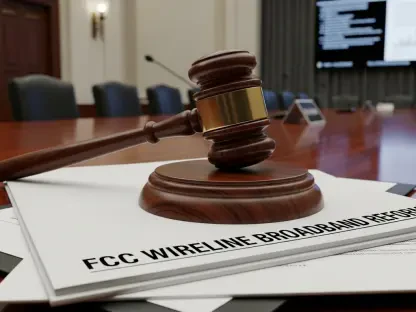The Telecom Regulatory Authority of India (TRAI) has recently made significant recommendations concerning the auction of millimeter wave (mmWave) spectrum for 5G services, suggesting lower prices compared to previous auctions. These new recommendations are seen as a proactive effort to make the spectrum more accessible for telecom operators and drive the proliferation of 5G technology across India. Specifically, the recommendations cover the spectrum bands of 37-37.5 GHz and 37.5-40 GHz, with block sizes of 100 megahertz per telecom circle and a validity period of 20 years, making them attractive for long-term investments. Additionally, TRAI has proposed a 40% spectrum cap that should not be combined with the 26 GHz band, a move to ensure balanced access among operators. Moreover, ISPs and M2M service providers with unified licenses are also permitted to participate in the auction, thereby expanding the range of potential bidders.
Lower Auction Prices and Payment Terms
In a bid to ensure affordability and drive higher participation, TRAI has set the reserve price for the 37-40 GHz bands at INR 59.8 million ($686,000) per megahertz. This price is notably 14% lower than the reserve price for the 26 GHz band auctioned in 2022, showcasing TRAI’s commitment to making 5G spectrum more financially accessible. The reserve prices are, however, heterogeneous and reflective of the regional market dynamics, ranging from INR 76 million in prime areas like Delhi to INR 4 million in less lucrative regions such as Himachal Pradesh.
To further alleviate the financial burden on telecom operators, TRAI has proposed flexible payment terms. These include options for upfront payment as well as spreading the cost over 20 equal annual installments. This flexibility allows telecom companies to better manage their finances and invest in additional infrastructure needed to roll out 5G services effectively. Despite these favorable terms, the 26 GHz band, initially included for a 2024 auction, failed to receive any bids. This could be attributed to telecom operators prioritizing the renewal of existing licenses and the lack of a supporting device ecosystem for that specific spectrum band. TRAI anticipates that the 37-40 GHz bands will not face such challenges, given the evolving ecosystem and the renewed interest from the operators.
Spectrum Reallocation and Challenges
In addition to the mmWave auction recommendations, TRAI considered auctioning the 42.5-43.5 GHz spectrum but eventually decided against it due to the current lack of a supporting ecosystem. The Department of Telecommunications (DoT) will have the final say in the timing of the upcoming auctions, which might include spectrum across up to ten other bands, providing a more extensive and varied spectrum landscape for telecom operators to work with.
Moreover, in a significant move to optimize spectrum allocation, India’s government has approved the refarming of 687 megahertz of spectrum from various ministries such as the Ministry of Defense, ISRO, and the Ministry of Information and Broadcasting. This repurposing aims to redirect these frequencies towards more advanced 5G and 6G services, aligning with India’s ambitious digital transformation goals. Indian carriers have long been advocating for additional spectrum to enhance current 4G and forthcoming 5G and 6G services. In response, a committee has been set up to identify further spectrum that can be refarmed to meet these growing demands.
In a related development, in October, DoT announced plans to refarm over 1,100 megahertz of spectrum for advanced 5G and 6G deployment. This involves identifying bands originally allocated to ministries such as space, defense, broadcasting, railways, and housing, and reallocating these to create auctionable space. This strategic move aims to relocate existing legacy systems to alternative frequencies, thereby optimizing available spectrum resources for advanced telecommunications services in India.
Future Outlook and Implications
TRAI had considered auctioning the 42.5-43.5 GHz spectrum but decided against it due to the absence of a supporting ecosystem. The Department of Telecommunications (DoT) will ultimately determine the timing of upcoming auctions, which may include up to ten additional spectrum bands, providing a diverse spectrum landscape for telecom operators.
Additionally, the Indian government has approved the refarming of 687 megahertz of spectrum from various ministries, including the Ministry of Defense, ISRO, and the Ministry of Information and Broadcasting. This repurposing aims to enhance advanced 5G and 6G services, in line with India’s digital transformation ambitions. Telecom operators have long sought more spectrum to bolster 4G and upcoming 5G and 6G services. In response, a committee has been established to identify further spectrum for refarming to meet growing demands.
In October, the DoT announced plans to refarm over 1,100 megahertz of spectrum for advanced 5G and 6G deployment. This plan involves reallocating bands initially assigned to ministries such as defense, space, broadcasting, railways, and housing, to create auctionable space. This strategic move seeks to optimize available spectrum resources by relocating existing systems to alternative frequencies.









